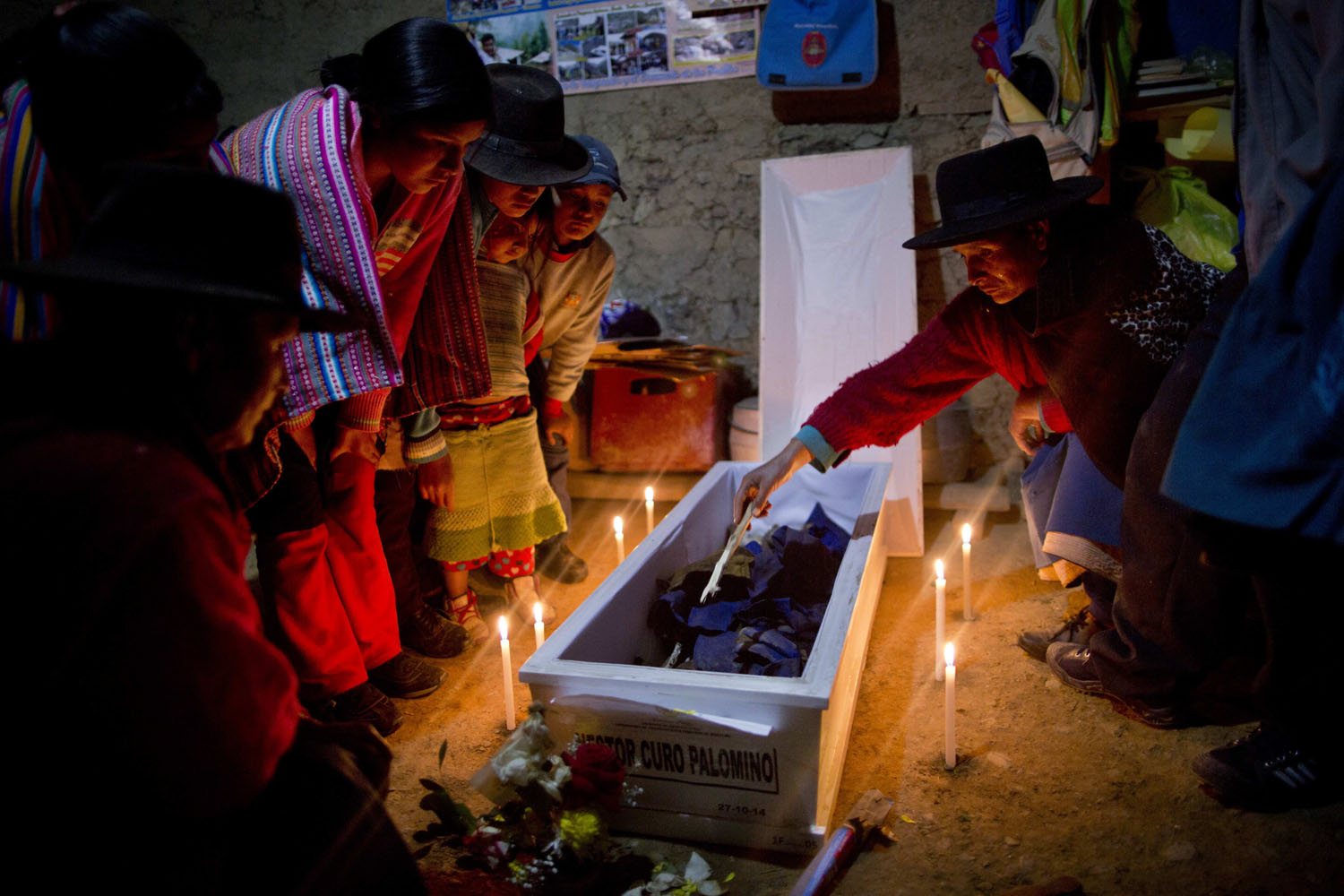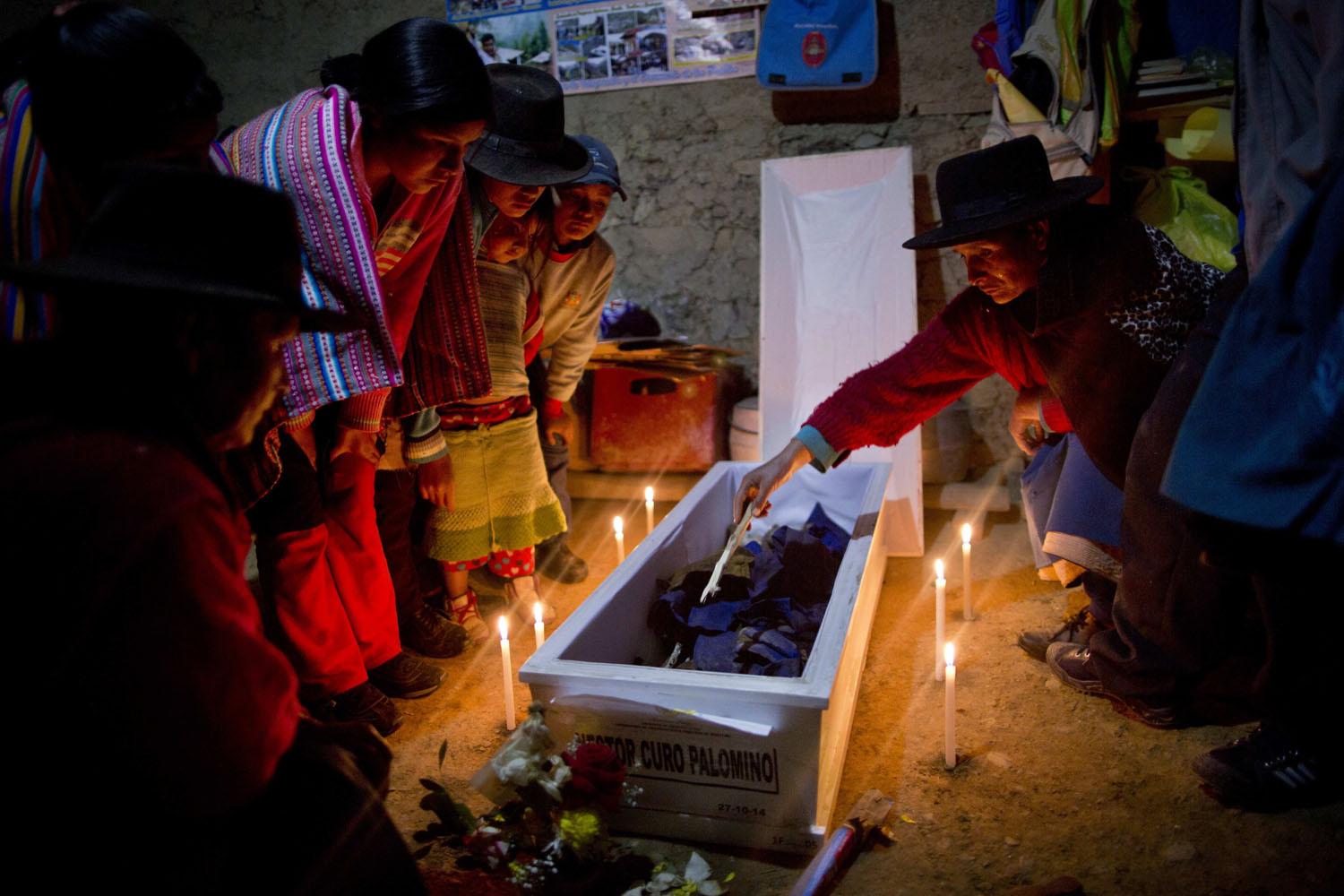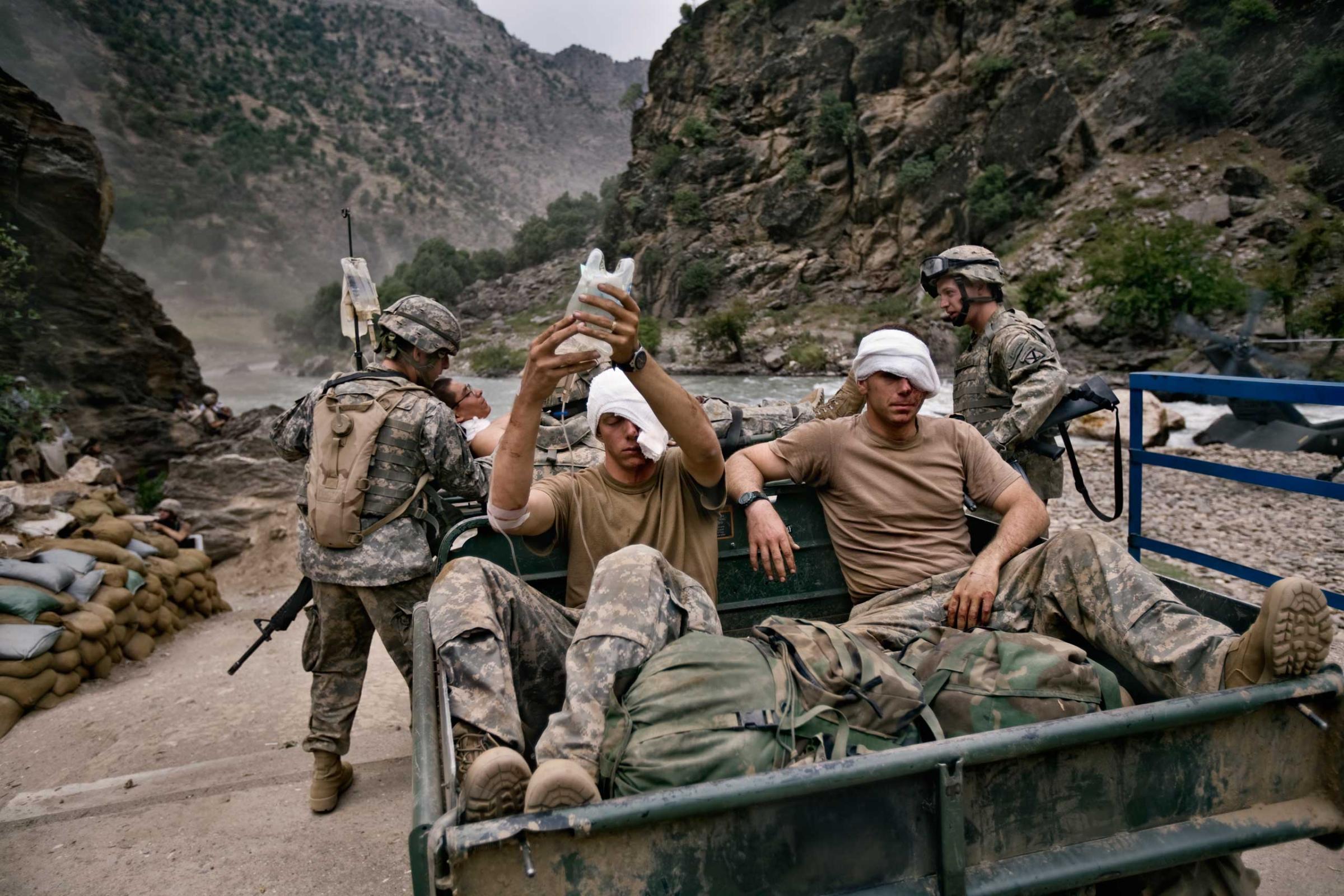
Today’s daily Photojournalism Links collection highlights Associated Press photographer Rodrigo Abd’s work documenting the legacy of Peru’s “dirty war.” Thousands went missing during the conflict, which lasted from the early 1980s to 2000; since 2006, authorities have unearthed more than 2,900 sets of remains from the 15,000 estimated to have been “disappeared.” Abd’s photographs show the emotional second burial of men who were slain in the remote Andean village of Huallhua, in Ayacucho state, in 1990. Their remains were recently exhumed and returned for a proper burial, giving families a sense of closure nearly a quarter-century after their deaths.
Rodrigo Abd: Peru’s Dirty War Victims (The Associated Press Images)
Denis Sinyakov: Moscow nightclub caters to women (CNN Photo) These photographs from a Moscow club show how its owners do their utmost to please female clientele.
The Images that Moved them Most: Photographers on America’s Veterans (TIME LightBox) Powerful collection of pictures and words from photographers who have covered America’s most recent wars.
Processing the News: Retouching in Photojournalism (American Photo) Scott Alexander continues the important debate surrounding the industry’s ethics of retouching.
War photography: what happens after the conflict? (The Telegraph) New show at London’s Tate Modern – Conflict, Time, Photography – looks at wars and battles through the visual representation of their aftermath. Tate Modern’s curator Simon Baker explains the thinking behind the exhibition.
The first photograph of a human being (Mashable) The fascinating story behind the “earliest known photograph to include a recognizable human form.”
Photojournalism Links is a compilation of the most interesting photojournalism found on the web, curated by Mikko Takkunen, Associate Photo Editor at TIME. Follow him on Twitter @photojournalism.



More Must-Reads from TIME
- Donald Trump Is TIME's 2024 Person of the Year
- Why We Chose Trump as Person of the Year
- Is Intermittent Fasting Good or Bad for You?
- The 100 Must-Read Books of 2024
- The 20 Best Christmas TV Episodes
- Column: If Optimism Feels Ridiculous Now, Try Hope
- The Future of Climate Action Is Trade Policy
- Merle Bombardieri Is Helping People Make the Baby Decision
Contact us at letters@time.com